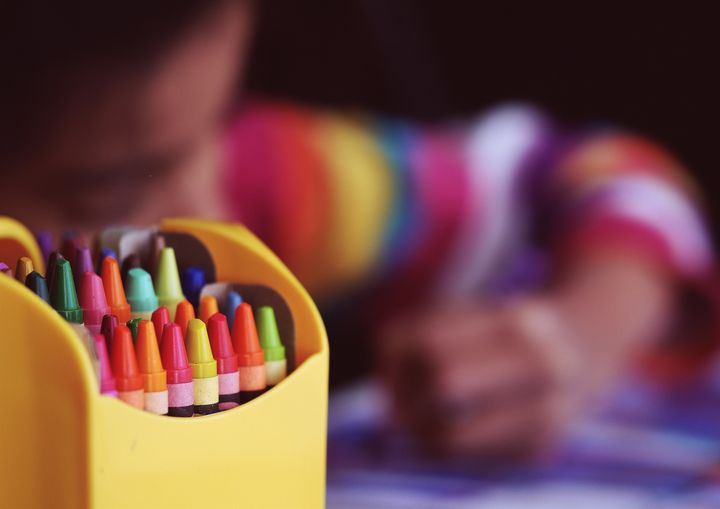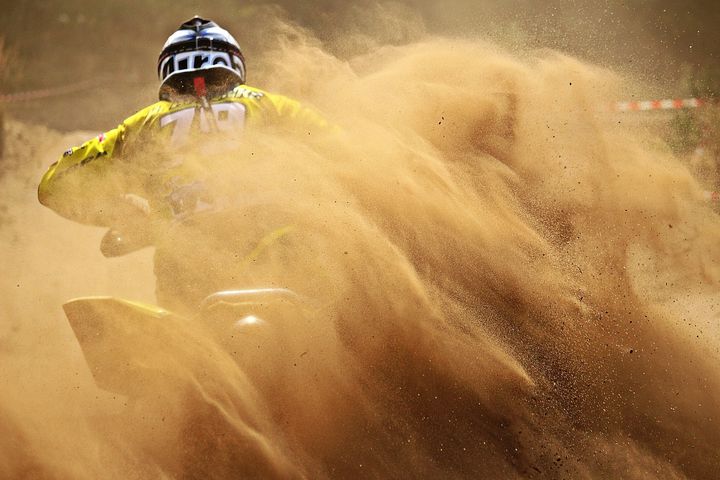
Multiple reports since 2000 have uncovered asbestos in a variety of children’s crayon brands.
As if we didn’t have enough reason to be worried about our kids, a deadly carcinogen was recently found in a child’s beauty product. Traces of asbestos — a toxic fiber responsible for the estimated 3,000 U.S. mesothelioma diagnoses each year — were found in the "Just Shine Shimmer Powder" makeup sold by Justice.
The popular tween retailer, formerly known as Limited Too, recently pulled the cosmetic from store shelves and has committed to conducting an in-depth investigation into the product. This comes after a WTVD ABC11 investigation found the lethal substance and several heavy metals during a report on what’s not listed on makeup made specifically for kids and teens.
Sean Fitzgerald, the Director of Research and Analytical Services at government-licensed Scientific Analytical Institute (SAI), found the results alarming.
“I would treat it like a deadly poison, because it is,” he said.
Unfortunately, this fibrous poison takes decades to act, which means children exposed to asbestos at a young age may have to wait 20-50 years to see if the deadly carcinogen will take years off their life with a mesothelioma or lung cancer diagnosis. Given that the shimmer powder was already pulverized upon purchase, the microscopic asbestos fibers were just waiting to be inhaled by unaware children.
How Did the Asbestos Get There?
The answer lies in talc.
Talc is a naturally occurring mineral used in many cosmetic products. Although talc is considered safe, it is often mined near asbestos deposits on the earth’s surface. Their close proximity can lead to accidental contamination.
While the U.S. Food and Drug Administration (FDA) prohibits the use of talc contaminated with asbestos, the deadly fibers repeatedly show up in cosmetic products marketed for children and adults. Tim Povtak, Senior Writer for Asbestos.com, explains that “[the FDA’s] testing protocol is not as revealing as the one SAI performed with a transmission electron microscope.”
As a result, asbestos continues to be ingested and inhaled by unsuspecting children.

Our children deserve better than asbestos-contaminated toys.
Not the First Time Kids Were Exposed to Asbestos
Unfortunately, this is not a one-off occurrence. There have been numerous reports of children’s toys and products being contaminated with asbestos, and with our current policies, an end to this danger is not in sight.
These incidents serve as grim reminders that children may be exposed to a toxic substance in the place parents least expect: Their own toys.
Crayons
Just two years ago, the Environmental Working Group Action Fund (EWG) discovered asbestos in children’s crayons manufactured in China and imported to the United States. Multiple crayon brands were yanked from store shelves in order to prioritize our family’s safety before corporate profits. These include:
- Saban Power Rangers Super Megaforce Crayons (Greenbrier International)
- Disney Mickey Mouse Clubhouse Crayons (Greenbrier International)
- Nickelodeon’s Teenage Mutant Ninja Turtles Crayons (MII Inc.)
- Amscan Crayons (Amscan)
At the urgent plea of lawmakers and anti-asbestos activists, several key retailers — Toys R Us, Party City, Amazon.com and Dollar Tree — finally pulled the inventory, but for some families, it may have been too late. Numerous parents had already purchased America’s favorite coloring tool for their kids.
Asbestos has been detected in crayons dating back to a 2000 study, which means manufacturers are aware of the potential health concerns yet continue to sell subpar and potentially lethal products.
Crime Scene Kits
In the 2015 EWG report that found the toxic fibers in crayons, researchers uncovered the same lethal substance in several amateur crime lab kits. Both the Inside Intelligence Secret Spy Kit (Buy-Rite) and EduScience Deluxe Forensics Lab Kit (Toys R Us) contained traces of asbestos, meaning once again the carcinogen was in the hands of our children.
Modeling Clay
Several reports found a deadly carcinogen in modeling clay marketed to children. According to EWG tests, ArtSkills Clay Bucket and Ja-Ru Toy Clay contained traces of asbestos.
While undisturbed asbestos typically does not carry the same dangers as airborne asbestos, a problem arises when children put toys, such as clay or crayons, in their mouth. Ingesting asbestos can greatly increase the risk of developing peritoneal mesothelioma, which occurs in the lining of the abdomen.
“Even if the absolute risk is relatively low, children are more vulnerable to toxic material and carcinogens,” said Dr. Richard Lemen, former U.S. Assistant Surgeon General. In addition, their young age leaves even more time for a debilitating asbestos-related disease to develop.

Nearly 13,000 Polaris ATVs sold since 2000 may contain asbestos-tainted brake pads.
Kid’s Quad Bikes
Twelve models of Polaris youth quad bikes have been recalled in Australia as a result of asbestos in their brake pads. The all-terrain vehicles have been sold in Australia and New Zealand since January 2000, yet the dangers associated with these models are just coming to light. An estimated 13,000 Polaris quad bikes are believed to have been sold containing possible asbestos.
Brake pads that contain asbestos release a deadly dust into the air every time a driver applies the brakes. This action then risks the health and safety of not only the driver, but also people in the surrounding area during normal operation of the vehicle.
When Is It Enough?
Throughout the last few years, asbestos has been detected in a variety of children’s toys and products. Every time, we see initial outrage from parents and anti-asbestos advocates alike, but it is never enough. Despite this outrageous violation of our children’s health and safety, asbestos is still not banned in the United States.
Without a ban, it is still legal to use small amounts of asbestos in products we give to our children. However, no amount of asbestos exposure is safe. We all deserve better.
